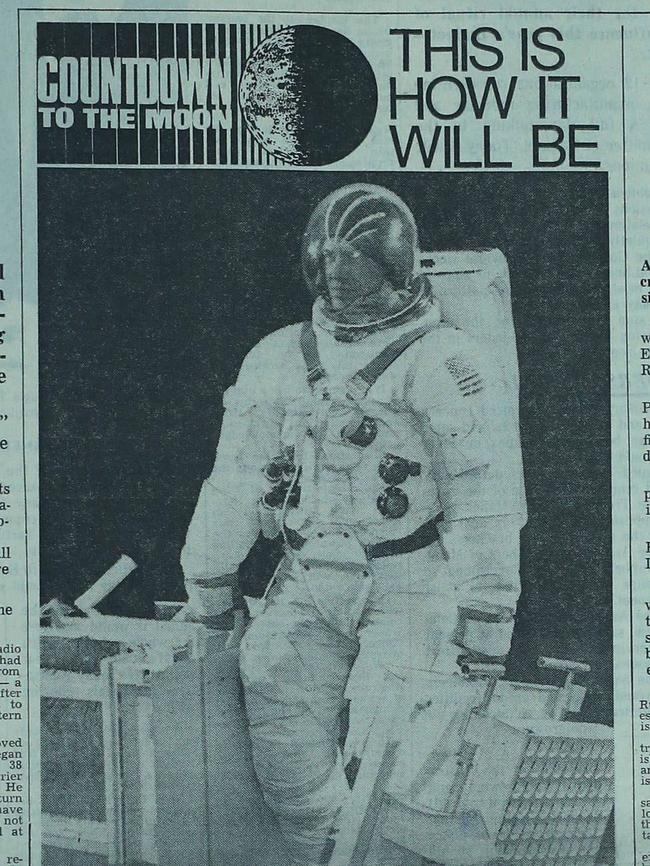Apollo 11: how lunar mission made it into our lounge rooms
The Apollo mission was shown around the world but planning for Australia to tune in was finalised just 11 days before the historic event.
Eleven days before the first humans landed on the moon, plans for TV cameras to follow the space mission and broadcast to millions of Australians were finalised.
In its Countdown to the Moon series on the corresponding Thursday 50 years ago, The Australian reported how readers would be able to watch the landmark moment when Neil Armstrong, Edwin Aldrin and Michael Collins would make it to the moon.
“Eagle, the lunar lander, will be followed down to the moon’s surface by TV cameras aboard the command module, 60 miles up,” the story read. “The command module, Columbia, will be manned by Michael Collins, who will keep his craft in a moon orbit while Neil Armstrong and Edwin Aldrin attempt to land in Eagle.”
The TV cameras were originally to be monitored directly by a US antenna, known as Goldstone in California, and sent through to the control centre in Houston, Texas. But a change of plans saw the 64m Parkes dish take the leading role along with Honeysuckle Creek near Canberra.

“This should give Australians an excellent view of Armstrong leaving Eagle’s cabin and moving down the ladder to stand on the surface of the moon,” the story read.
In the Countdown to the Moon, The Australian detailed the leaps Russia had made in the space race, from the moment it launched the then largest rocket into space, which pushed the world’s first artificial satellite, “Sputnik” in Russian, into an orbit 620 miles (998km) from Earth in October 1957.
The next month, Russian space teams put a white fox terrier, Laika, into space for seven days, which, to Americans, was an embarrassing defeat in the space race.
On the second anniversary of Sputnik, the story read, Russia sent Luna-3 on a mission to photograph the far side of the moon, as US missions failed. “To many Americans these events were as shattering as Pearl Harbor and the Russian premier, Mr Kruschev, salted the nation’s pride by dismissing the tiny Explorer-1 (January 1958) satellite as an ‘American grapefruit’,” the story read.
-
Real-life sci-fi thrill put war to one side
On July 21, 1969, which happened to be my sister’s 21st birthday, I was in the lounge room of the officers’ mess at the then Infantry Centre at Ingleburn in southwest Sydney.
I was a 24-year-old lieutenant and had just been advised of my posting to 8RAR in Ennogera, Queensland, prior to the battalion’ s tour of duty in South Vietnam.
A group of officers gathered around the TV, having been excused from our duties, to watch this historic event. For the duration of the televised landing, all thoughts of the Vietnam War took second place to the spectacle unfolding, in black and white, on the TV.
It’s fair to say that we were transfixed and overwhelmed by the fact we were watching, in real time, man landing on the moon. This was something straight out of science fiction, and yet it was actually happening for real.
I remember becoming somewhat emotional at the realisation that a human being was actually walking on the moon. It was difficult for me to get my head around the totality of the event and how it had been achieved. It is still clearly etched in my mind.
Fred Harvison, St Ives, NSW


